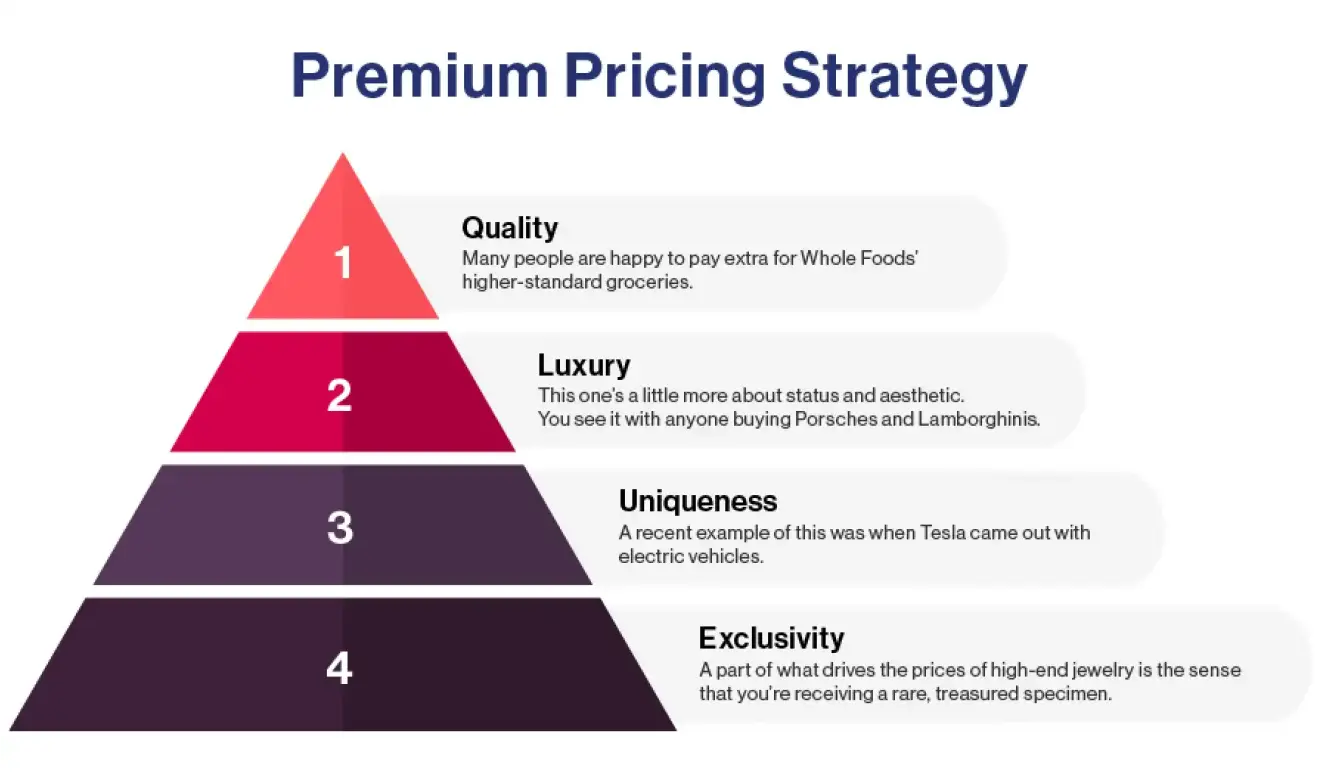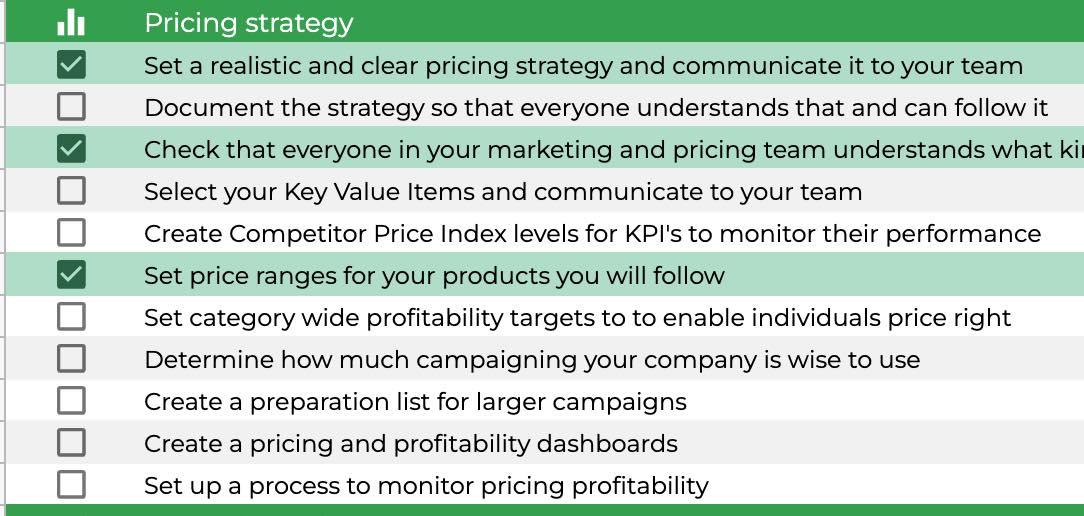Evaluating the Performance of Your Pricing Strategy in a Changing Market
Evaluating the Performance of Your Pricing Strategy in a Changing Market
Blog Article

Master Effective Prices Methods to Take Full Advantage Of Revenue
In the ever-evolving landscape of business, mastering efficient prices approaches is important for organizations aiming to make best use of earnings. A nuanced understanding of rates psychology can significantly affect consumer actions and acquiring choices. Utilizing vibrant and value-based pricing designs enables organizations to adapt to market variations and consumer sentiment. Nonetheless, the complexity of rival evaluation and recurring efficiency examination increases important questions regarding the sustainability of these methods. What specific techniques can be executed to make certain long-lasting success and client commitment in this competitive setting?
Understanding Rates Psychology
Recognizing rates psychology is important for businesses aiming to maximize their prices approaches. This field checks out exactly how customers regard costs and exactly how these understandings affect their investing in choices. Key ideas in rates psychology include the anchoring effect, where the initial cost provided acts as a recommendation factor for customers, and the idea of price level of sensitivity, which differs among various client sectors.
Furthermore, companies can leverage the idea of perceived value, where the perceived benefits of a service or product can warrant a higher price factor. Premium prices can develop an aura of exclusivity, attracting customers that connect greater prices with remarkable top quality. On the various other hand, psychological rates, such as establishing a cost at $9.99 rather of $10, can substantially affect customer actions by making costs appear extra eye-catching.
Moreover, scarcity and necessity can improve the regarded worth of products, motivating quicker investing in decisions. Understanding these emotional triggers makes it possible for services to create pricing strategies that not just drive sales yet also foster consumer commitment. Hence, understanding prices psychology is essential for effective pricing strategy solution, resulting in enhanced productivity and market positioning.
Implementing Value-Based Rates

Next, sector your consumers based on their determination to pay and the worth they regard. By doing so, you can customize offerings and rates strategies to align with different sections.
Continually monitor market problems and customer feedback to refine your pricing method over time. By implementing value-based prices, organizations can enhance productivity while fostering long-lasting customer loyalty.
Checking Out Dynamic Pricing Designs
In today's rapidly altering market landscape, vibrant rates designs have actually arised as a powerful approach for businesses looking for to optimize profits and respond to variations popular. These versions enable business to adjust their costs in real-time based upon various elements such as consumer habits, market trends, and stock degrees. By leveraging data analytics and algorithms, services can determine ideal rates points that maximize sales while continuing to Web Site be competitive.
Dynamic prices can take different kinds, consisting of time-based rates, where rates fluctuate based upon time of day or season, and demand-based prices, which readjusts rates according to existing customer demand. This versatility not just boosts productivity yet likewise improves customer complete satisfaction by offering rates that reflect real-time market problems.
Applying dynamic pricing needs a durable technical framework and a deep understanding of client sections. Transparent communication regarding pricing changes can aid alleviate customer frustration and foster count on, inevitably leading to continual earnings in a competitive marketplace.
Studying Rival Pricing
Checking competitor pricing is necessary for businesses aiming to preserve an affordable edge in their particular markets. By evaluating rivals' pricing techniques, companies can recognize market patterns, recognize consumer preferences, and change their pricing accordingly. This analysis entails celebration data on rivals' prices, advertising strategies, and item offerings to inform pricing decisions.
To properly examine competitor prices, companies must utilize different devices and methods, such as rate monitoring software application, market research study reports, and customer comments. This data can expose just how competitors position their product or services, allowing businesses to separate their offerings or adopt similar approaches to continue to be look these up pertinent.
Additionally, it is vital to classify competitors into direct and indirect competitors. Direct competitors provide similar services or products, while indirect rivals may accomplish the exact same customer demand with various options. Recognizing the nuances in between these groups will certainly make it possible for organizations to customize their pricing techniques much more efficiently.
Ultimately, ongoing rival pricing evaluation is crucial for making enlightened prices decisions. It enables businesses to continue to be agile in feedback to market shifts, guaranteeing they can take chances and minimize threats connected with pricing approaches.
Assessing Pricing Performance
Recognizing how rival rates affects market dynamics leads to a natural emphasis on examining prices performance within one's own company. This analysis is vital for recognizing areas of toughness and possibilities for renovation, ultimately enhancing productivity.

Additionally, carrying out normal pricing audits can disclose inconsistencies between anticipated and real efficiency. This entails comparing rates information throughout different sections and networks to recognize variances and recognize patterns. Moreover, incorporating consumer feedback can supply insights into perceived value versus actual prices, making sure positioning with market assumptions.
Last but not least, leveraging data analytics tools can facilitate deeper understandings into prices performance, making it possible for companies to make data-driven adjustments (Pricing Strategy). By continuously assessing pricing efficiency, resource organizations can adapt to market changes and enhance their strategies, guaranteeing sustained profitability in a competitive landscape
Conclusion
By leveraging rates psychology, companies can enhance perceived worth and dressmaker prices to varied consumer segments. The adoption of dynamic and value-based pricing versions assists in real-time changes based on demand and consumer desire to pay.
Comprehending rates psychology is critical for companies intending to optimize their rates approaches. Understanding these psychological triggers enables organizations to develop pricing strategies that not just drive sales yet likewise foster consumer loyalty. Thus, mastering prices psychology is important for reliable rates strategy solution, leading to improved profitability and market positioning.
By assessing rivals' pricing strategies, firms can determine market patterns, understand customer preferences, and change their prices accordingly. By leveraging prices psychology, businesses can enhance viewed worth and dressmaker pricing to varied customer sectors.
Report this page